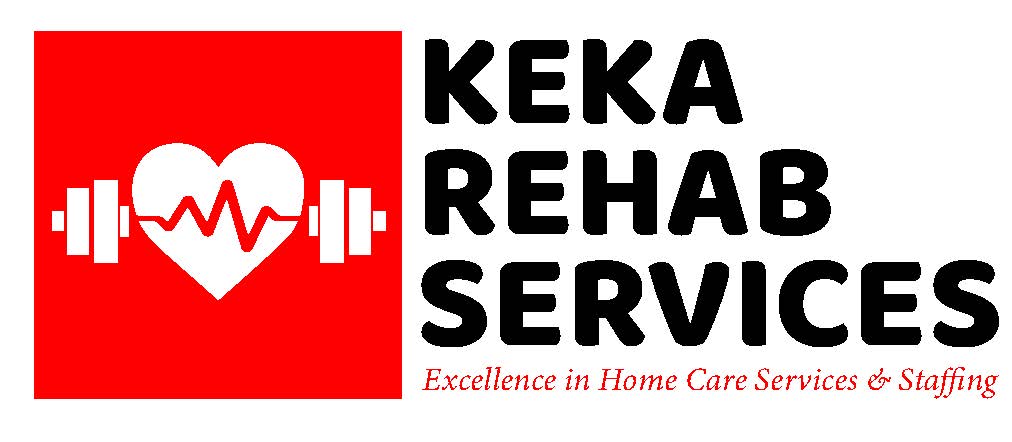Nursing home care in the United States can be very expensive for families. The cost changes a lot based on where you are, the type of room, and the level of care. In 2024, expect to pay $8,929 a month for a shared room or $10,025 for a private one. This means you’ll spend around $107,146 or $120,304 a year, respectively.
The cost also depends on where you live. Texas is more affordable at $5,483 a month for a shared room, while Alaska is the priciest at $19,267. Cities usually cost more. For example, San Jose, California, is $13,809 a month, while San Antonio, Texas, is $5,323.
The cost of nursing home care is not fixed. From 2022 to 2023, prices went up 4.40% for shared rooms and 4.92% for private ones. Experts say by 2030, the cost for a shared room will be over $10,000, a 33% increase from now.
It’s important to know these costs for long-term care planning. With the right research and planning, you can understand nursing home care costs better. This helps you make good choices for yourself or your loved ones.
Key Takeaways
- Median monthly costs range from $8,929 for semiprivate to $10,025 for private rooms
- Annual nursing home care costs can exceed $100,000
- Costs vary significantly by state, with Alaska being the most expensive
- Urban areas tend to have higher nursing home care costs
- Prices are projected to increase by one-third by 2030
- Room type and location are major factors in cost determination
Understanding National Median Costs for Nursing Home Care
Nursing home costs differ across the United States, affecting senior care prices a lot. We’ll look at the national median costs for different nursing home care types and their future trends.
Private Room Costs and Trends
In 2023, the median yearly cost for a private room in a nursing home was $116,800. This means a daily rate of $320, with prices from $215 in Missouri to $1,137 in Alaska. The cost for private rooms went up by 4.92% from the year before.
Semi-Private Room Cost Analysis
Semi-private rooms are a more affordable choice. In 2023, the median monthly cost was $8,669, or $104,028 a year. Like private rooms, semi-private costs also rose by 4.92% from the year before.
Annual Cost Projections Through 2030
As senior care prices keep going up, looking at future costs is key. By 2030, the monthly cost of a semi-private room is expected to be over $10,000. This is a third more than today’s prices. With 10,000 Baby Boomers turning 65 daily until 2030, demand for nursing home care will likely increase, pushing costs even higher.
It’s important to plan for the long term, knowing 7 out of 10 people will need long-term care. When choosing, remember costs vary by location, amenities, and care level.
Cost of Nursing Home Care by Geographic Location
Nursing home costs vary across the United States. This is due to local economies and healthcare systems. Your location greatly affects eldercare fees and retirement home pricing.
Most Expensive States for Nursing Home Care
Alaska is the priciest state for nursing home care, with a daily rate of $1,137 for a private room. Other expensive states include Connecticut, Oregon, New York, and Massachusetts. In Alaska, the yearly cost for a private room can be as high as $378,140, much higher than the national average.
Most Affordable States for Nursing Home Care
Missouri has the lowest daily rate at $215 for a private room. Texas, Oklahoma, Arkansas, and Louisiana also offer affordable options. In these states, you might find daily costs as low as $180 in some areas.
Urban vs Rural Cost Variations
Urban areas have higher nursing home costs due to living expenses and labor costs. Rural areas often have lower costs but fewer facilities. The national median cost for a private room in a nursing home is $116,800 per year, but costs vary widely by location.
Understanding these cost differences is key when planning for long-term care. While cost matters, consider the quality of care and family proximity when choosing a nursing home.
What Services Are Included in Nursing Home Costs
Nursing homes offer many services to help residents. They provide 24-hour care and supervision by licensed doctors. In 2023, the cost for a semi-private room was $104,025 a year. A private room cost $116,800 annually.

Skilled nursing facility expenses cover important medical services like:
- Wound care
- Medication management
- Catheter care
- Dialysis support
- Rehabilitation services
Nursing homes also help with daily tasks like bathing and dressing. They offer meals, housekeeping, and social activities. Some may charge extra for health assessments.
Keep in mind, extra services can cost more, depending on the state. Nursing homes might raise basic service costs yearly. Families should also know about “leave of absence” fees for residents away from the facility.
Knowing what services are included in nursing home costs is key. It helps families choose the right long-term care. Even though costs are high, the care provided is vital for those needing constant medical help.
Factors Affecting Nursing Home Pricing
Knowing what affects nursing home costs is key to planning for the future. Several important factors shape the prices of nursing homes.
Room Type and Privacy Options
The room you pick greatly affects your costs. Private rooms are pricier than shared ones because they offer more privacy. Nursing homes usually cost between $6,800 and $7,800 a month.
Level of Medical Care Required
More medical care means higher costs. The most expensive care is specialized medical care. The level of care is the biggest factor in senior care costs. Nursing homes for dementia or rehab cost more because they need more resources.
Facility Amenities and Features
More amenities and services increase costs. Places with fancy meals, fun activities, and therapy programs charge more. Bigger, well-known nursing homes also cost more because of their reputation.
Location also affects prices. Urban areas charge more than rural ones because of demand. The most expensive states for long-term care are New Jersey, New Hampshire, Alaska, Massachusetts, and Washington DC.
By understanding these factors, you can plan better for your future care costs. There are ways to help pay for nursing home costs, like Medicaid, Medicare, insurance, and veterans’ benefits.
Comparing Costs: Nursing Homes vs Other Care Options
Looking at senior care options, it’s key to know the cost differences. Nursing homes can cost between $50,000 and $200,000 a year. This depends on where you are and the quality of care. This high cost makes many families look for other choices.
Assisted living is a more affordable option. It costs about $35,000 a year for basic health care. This makes it a good choice for seniors who need some help but don’t need constant medical care. Monthly costs for assisted living range from $4,900 to $9,500. Memory care units cost between $6,900 and $11,500.
Home care is another option to consider. Home care aides cost between $18 and $25 an hour. This allows for care schedules that fit your needs. For 6-8 hours of daily care, expect to pay $6,000 to $8,500 a month, plus living expenses. Many older adults prefer to stay at home, saying it makes them happy and comfortable.
When looking at senior care prices, remember nursing homes offer 24/7 medical care. This is why they cost more. Assisted living and home care can be adjusted to fit individual needs. This can save a lot of money for seniors who don’t need constant medical care.
Payment Options and Financial Assistance
Finding out how to pay for nursing home care can be tough. It’s important to know your payment choices and financial help. This helps manage eldercare costs better.
Medicare Coverage Details
Original Medicare covers skilled nursing care for a short time. It pays for 100 days of care. You get full coverage for the first 20 days and partial for days 21-100, at $204 per day. But, Medicare isn’t for long-term nursing home care.
Medicaid Eligibility and Coverage
Medicaid is a program that many nursing homes accept. To qualify, you need to meet income and resource tests. Some states have higher income limits for nursing home residents. But, Medicaid beds might be hard to find in some places, affecting coverage.

Private Insurance Options
Long-term care insurance can help with nursing home costs. But, premiums can be expensive. Policies differ, covering nursing home care, adult day care, and more. Group rates are available for some employees and retirees. Life insurance can also fund long-term care needs.
In 2023, a private room in a nursing home costs $116,796 per year. Many families use savings, pensions, retirement income, and family help to pay. Bridge loans offer short-term funding while you sell assets. It’s important to explore all options to manage nursing home care costs.
State-by-State Cost Analysis and Trends
It’s key to know how much nursing homes cost in different states when planning for retirement. The price of care changes a lot based on where you live. In 2024, a private room in a nursing home costs $330 a day or $10,025 a month. A semiprivate room is $294 a day or $8,929 a month.
Here are some examples of costs in different states:
- Texas: $5,483 (semiprivate) to $6,893 (private) per month
- Alaska: $19,267 (semiprivate) to $35,622 (private) per month
These big differences show why it’s important to think about where you live when planning for nursing home costs. The rate at which these costs grow also changes by state. For example, from 2015 to 2021, Minnesota saw a 10% growth rate for both room types. Alabama, on the other hand, saw only a 2% increase.
Looking back, nursing home prices have grown a lot. From 1977 to 2004, they went up by 7.5% every year. This is faster than medical care and other goods and services.
When thinking about future care, remember that by 2030, semiprivate room costs will likely be over $10,000 a month. This is a third more than today’s prices. This shows the need for careful planning to cover nursing home costs in your chosen state.
Understanding the True Cost of Nursing Home Care
The cost of nursing home care is more than just room and board. In 2023, the average cost is $8,669 per month. This cost can change a lot based on where you are and the services you need.
Hidden Costs and Additional Fees
Many families find out about hidden costs when they put a loved one in a nursing home. These can include fees for special services, personal items, or activities. The real cost of care is often higher than what you first think.
Medicare only covers a little of the cost for skilled nursing care. It pays 100% for the first 20 days. But from day 21 to 100, you’ll pay $209.50 per day. After 100 days, you’ll have to pay for everything.
Long-term Financial Planning
It’s important to plan for long-term care costs. About 70% of people over 65 will need these services at some point. Women need care for an average of 3.7 years, and men for 2.2 years. Yet, only 39% of adults talk about how to pay for these costs.
The average cost of long-term care in 2017 was $172,000. But 25% of cases cost over $240,000. Start saving early and think about long-term care insurance to protect your money. Remember, 90% of adults struggle to pay $100,000 for a year in a nursing home.
Conclusion
It’s important to understand the costs of skilled nursing facilities for future care planning. The prices have gone up a lot over time. In 1977, it was $8,645, but by 2004, it jumped to $60,249, growing 7.5% each year.
This increase was faster than medical care and other goods and services.
Senior care costs vary a lot. This depends on where you are, the type of care, the room, and the amenities. In Michigan, for example, a semi-private room costs about $8,457 a month. A private room is more, at $9,453.
In Southeast Michigan, daily costs range from $360 to $460. This means monthly costs are between $10,800 and $14,260.
When planning for nursing home care, look at your payment options. Medicaid paid for 52% of costs in 2005, but private insurance only covered 4%.
It’s key to research local options, talk to financial advisors, and discuss with family. Knowing about skilled nursing facility costs helps you make informed decisions for your care.



